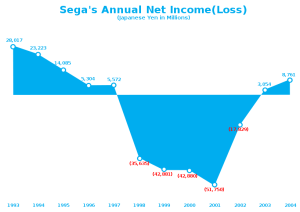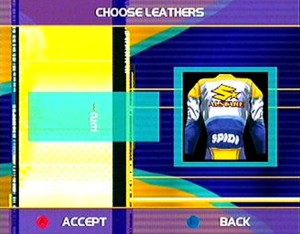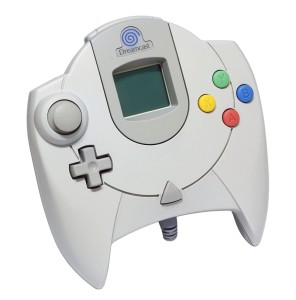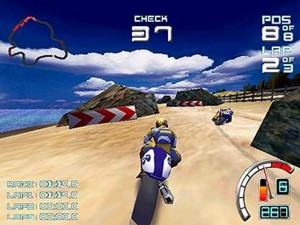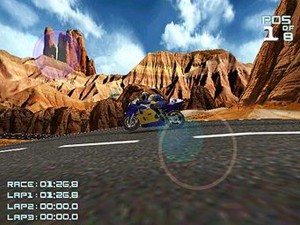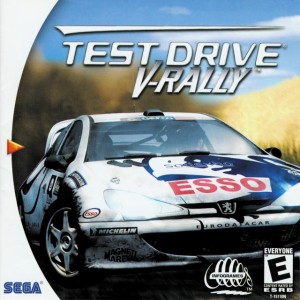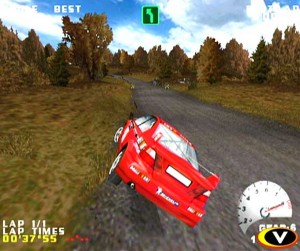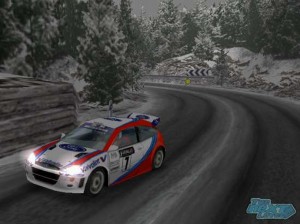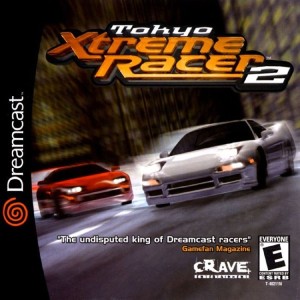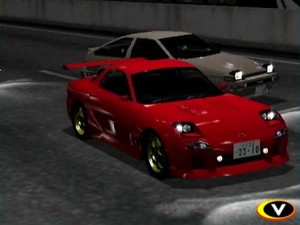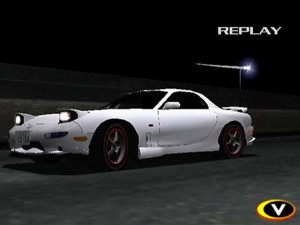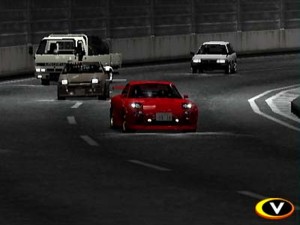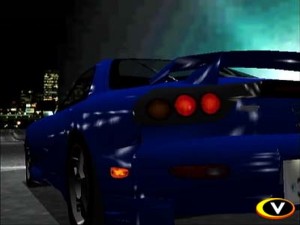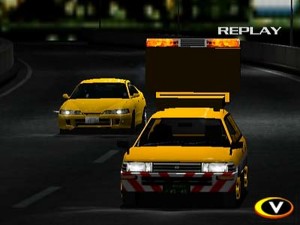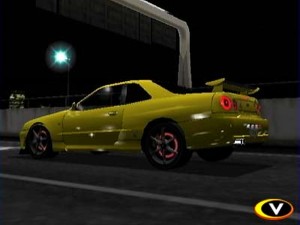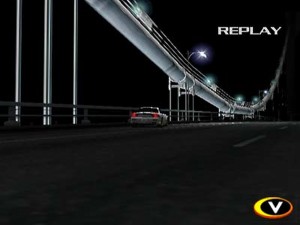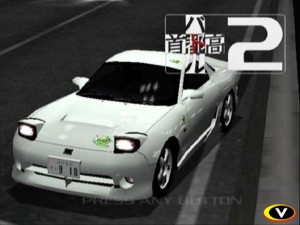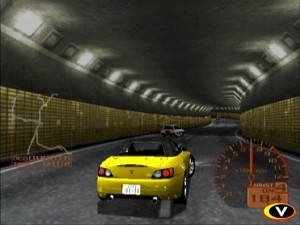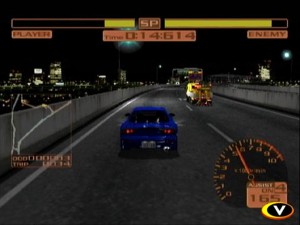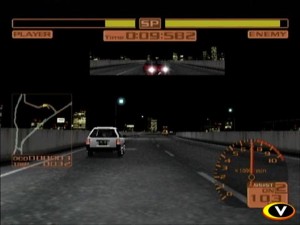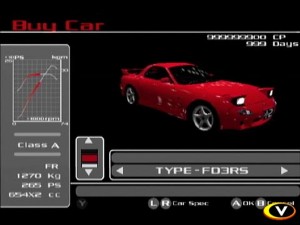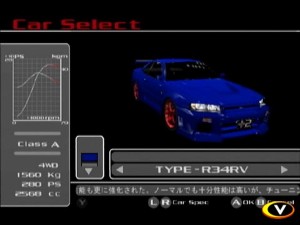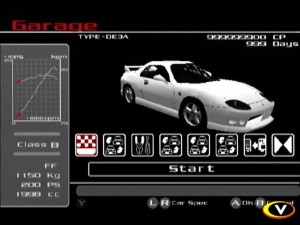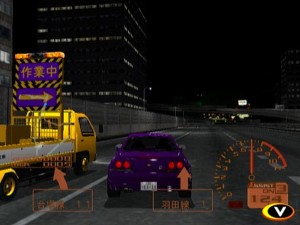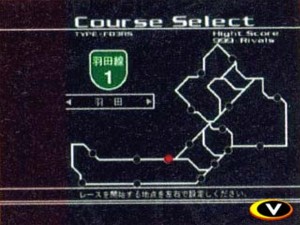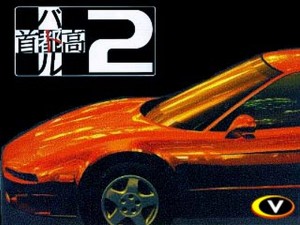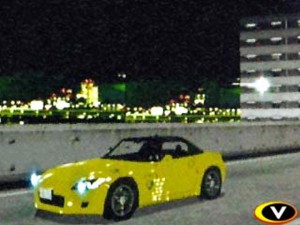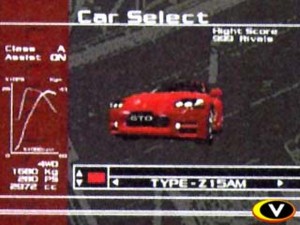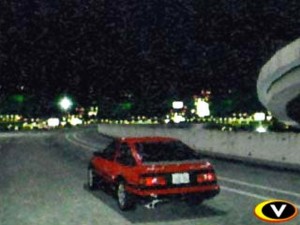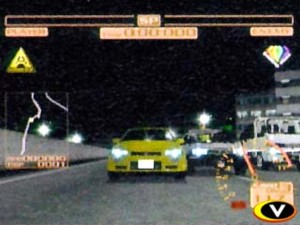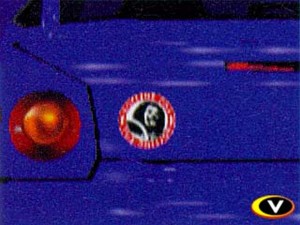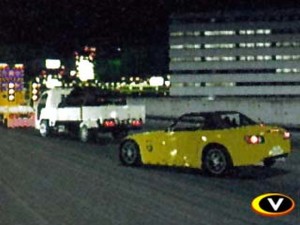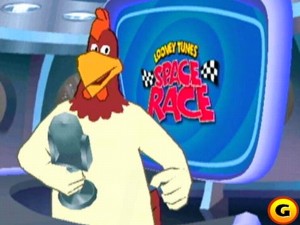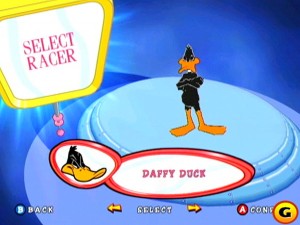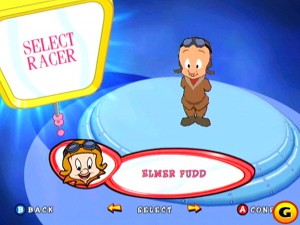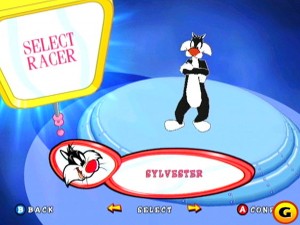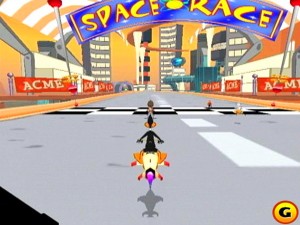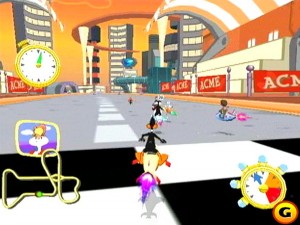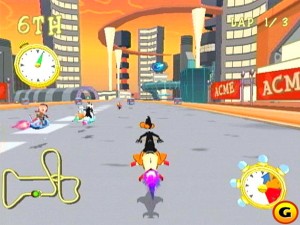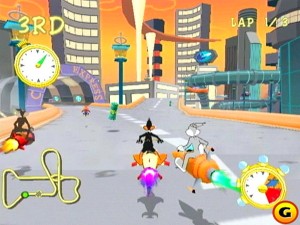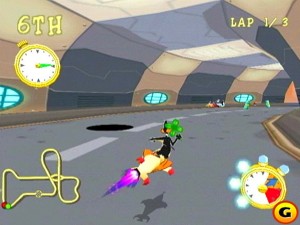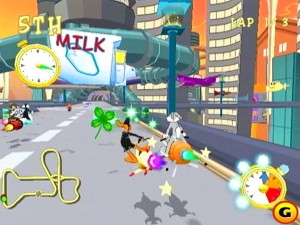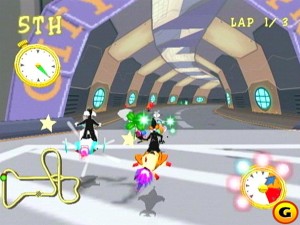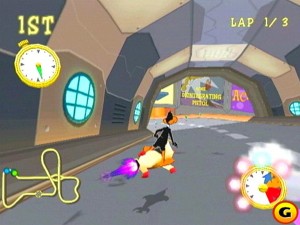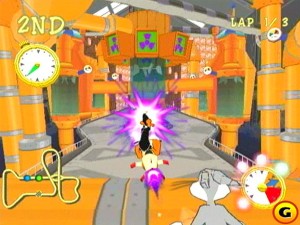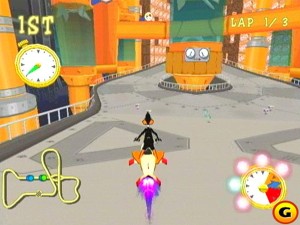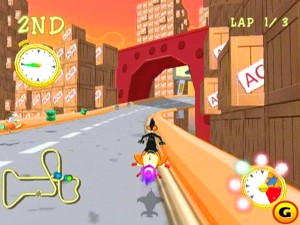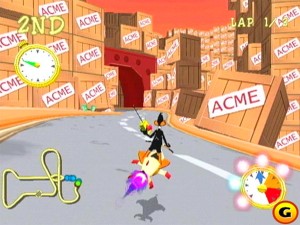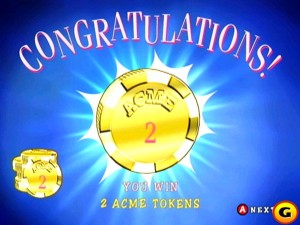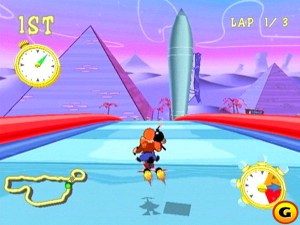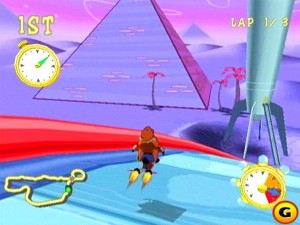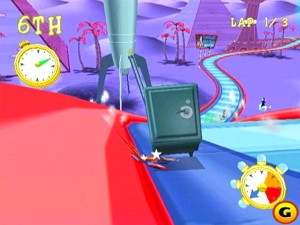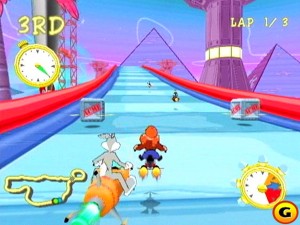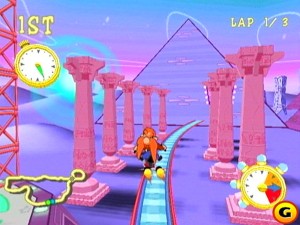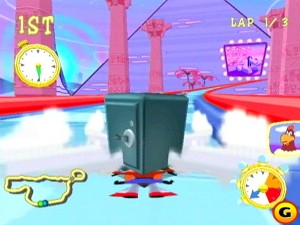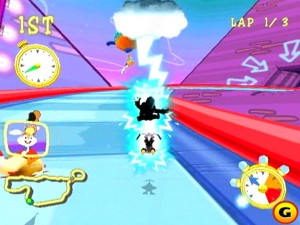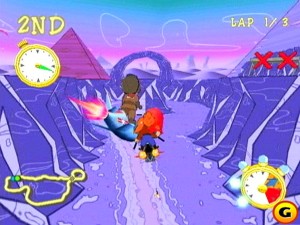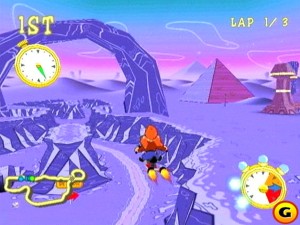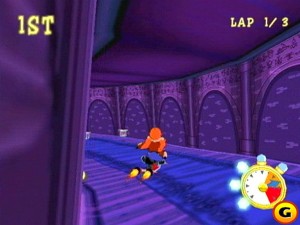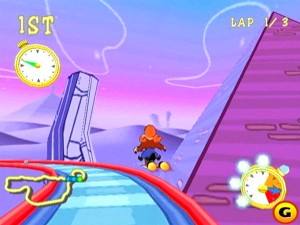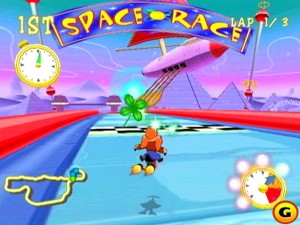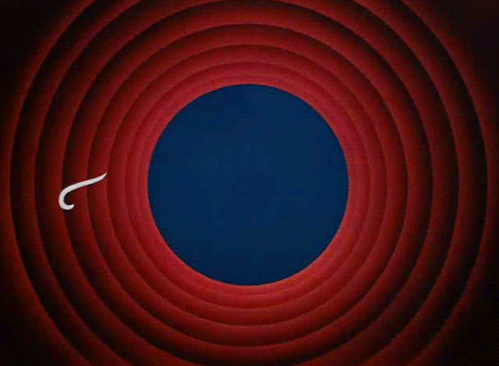Dreamcast, oh, Dreamcast. My beloved Dreamcast. I’d better get my fanboy raving out of the way early.
One of the most revolutionary consoles ever to be released, right up there with the likes of the Atari 2600 and the NES. While those two were phenomenal success stories with equally phenomenal lifespans, the Dreamcast’s life was cut short by Sega after only about two years of existence. And after that, Sega gave up on competing in the home console market.
If you want to know the whole story behind the epic and sad tale, head over to Eidolon’s Inn and read about it there, because it’s just fascinating to see how even such a great console as the DC couldn’t even save Sega’s hardware business.
My take on the Dreamcast’s failure in the market is this: Sega was in no shape to support any console at the time that wasn’t anything but a phenomenal success, and Sony was about to release the best selling home console of all time – the PlayStation 2. There are other details here and there that influenced things, but the way I see it, those are the big ones.
Sega really fucked themselves over with blunder after blunder after the Genesis turned out to be such a success for them in North America. The Game Gear, the Sega CD, the 32X, the Saturn, and the Nomad all ranged from “could have been handled better” to “never should have been released” if you ask me. A lot of this was due to market dominance by competitors like Nintendo, but Sega’s Japanese and American divisions were frequently at odds with each other too – wasting company resources by duplicating efforts for not much gain.
Add to this the relationships with game developers and publishers that had been damaged over the preceding years, not to mention retail and wholesale entities that had been burned during the Saturn’s botched launch. EA was one high-profile publisher that flat out refused to make games for the Dreamcast, and publicly stated so.
All of this put Sega in the position of the underdog once again. When the Dreamcast was launched in Japan, its launch titles were underwhelming to say the least. Hardware and manufacturing problems also hampered the launch over there, and it didn’t make much of a splash.
Things went differently in North America on 9/9/99. The lineup of launch titles for this launch of the DC has been called one of the strongest ever, and the North American launch of the Dreamcast was the most profitable console launch of any up to that time.
There was a lot of success and a lot of positivity around the Dreamcast for a while, but the PlayStation 2 was just around the corner. And come on, it’s the freaking PS2. All told, Sega sold 10.6 million Dreamcasts. Sony sold 150 million PS2s. Like the way the PlayStation crushed the Saturn, the PlayStation 2 crushed the Dreamcast.
Again, this is Robotman’s simplified overview. There’s a lot more nuance to the story, and if you’re a conspiracy nut, you can even go with the story that Sega execs killed it off to appease the Microsoft Gods so they could birth Xbox on the altar of greed… or something. That one never made much sense to me. The fact is that Sega just didn’t have the cash to support a console, and if you’re going to support a console, you need buckets and buckets of cash.
Oh yeah, and Shenmue cost a shit ton of money to make. But it’s so fucking sweet.
The Dreamcast has plenty of wonderful, awesome, interesting, unique and great-looking games. And if you have a modern TV or a nice big computer monitor, you can buy the Dreamcast VGA box, which will allow your Dreamcast to output in even higher resolution than it normally would.
Though it has a relatively small game library compared to the other consoles of its day, many of those titles are simply excellent, and belong in any gamer’s collection. Dreamcasts can be found for decent prices on ebay or at your local used game store, and used games can be had pretty cheap to in most cases. So if you haven’t added a Dreamcast to your retro-gaming collection yet, you’re really missing out on one of the best consoles the world has seen.
◔ ⌣ ◔ Bonus fun fact! ◔ ⌣ ◔
The Dreamcast’s VMU runs on a Potato.
Suzuki Alstare Extreme Racing (1999)
This game is a remake of a 1998 Dreamcast racing game released in Japan called “Redline Racing”. The graphics in that version aren’t so hot, in fact they’re kind of embarrassing when compared to other titles for the system.
But the game engine proved robust enough for Criterion an Ubisoft to spruce things up and bring it over here. And they did a wonderful job. The game looks and plays great. The action is fast and the gameplay balanced. I’m partial to motorcycle racing games, so this one is right up my alley. (Screenshots are taken from Spong.com, by the way.)
The interface was revamped too, though some odd choices were made there. Load and save are found in the options menu, for instance. Speaking of options, there are two different controller configurations to choose from. The default features the right shoulder button to accelerate and the left shoulder button to brake, which is the Dreamcast standard.
Sadly, this game doesn’t make use of the Dreamcast’s Jump Pack, which makes the controller vibrate. That really is a shame, because even though the Dreamcast controller is a little on the clumsy and awkward side, its vibration feature is wonderful to have in some games.
You can choose three different appearances for your biker on-screen, and there are six Suzuki racing bikes to choose from. Five of those must be unlocked by winning races though.
There are also a total of twelve different tracks, though nine of those are locked at the start of the game too. There are two modes of gameplay: a championship/circuit mode and single-race style.
During the championship, you will go through a total of 27 races, laid out in nine sets of three races each. You must place first in all of these races to win and advance to the next set of races, and this gets progressively harder and harder to do.
I love the way this game looks and feels. It’s a very good looking game for its time, and the music is handled very well. The feel of the races is great. I’ve seen the controls of this game criticized elsewhere, but I think that’s more a shortcoming of the Dreamcast’s controller itself.
That controller just isn’t the best designed controller out there, and its analog stick takes some getting used to. I found the control in this game to be delightful and spot-on.
But once you get a feel for the analog stick, this game handles superbly. It reminds me a lot of the way that “Road Rash 64” handles.
You can also customize your bike in this game. There are three attributes that you can adjust on a +/- scale: power, steering and brakes. You can tune these to your driving style, giving yourself a faster bike at the expense of braking, for instance.
The on-screen action looks realistic, and the wipe-outs look very good too. The only gripe I have about the appearance is the way your bike and rider “flash” on-screen when you restart out of a crash. I think it’s a bit distracting and not necessary.
The way the camera follows the action is also excellent. There are never moments when you wish you could change the camera angle or get a different view of the action.
And to put the cherry on top of the eye candy, at the end of each race, there is a brief “chase” scene that features a mini-replay of the race with different camera angles. Some shots are from the road, some from the sky, some from your bike. I think it looks great, but thankfully it can be skipped if you just want to go to the next race already. This is a common feature in racers from here on out.
“Suzuki Alstare Extreme Racing” is my favourite bike racing game outside of the “Road Rash” series, and it’s high up in my list of favourite racing games of all time. It’s just a shame it doesn’t have Jump Pack support, because it really feels like it’s missing here.
This is a great, fun racer, and you should definitely pick it up if you have a Dreamcast. The game goes pretty cheap used, so check it out.
Test Drive V-Rally (2000)
This is one in a series of games released for the Dreamcast, and in my opinion, this one is the best of that particular bunch. (Screenshots are taken from GameFAQs.com. The-NextLevel.com and JeuxVideo.com)
There are four modes of gameplay here, and up to four players are supported. Jump Pack is supported too. You can play this one like a pick-up-and-play arcade racer, or like a full-featured driving sim. There’s even a track editor so you can construct your own tracks to race on if you get bored with the ones built into the game. If you’re looking to get just one Dreamcast racing game that covers all the bases, this is the one to get.
The game menus and options are well laid out and extensive, and even available from the pause menu while racing, which is always nice. The music is decent, though it’s nothing special. Some of the more blatant Nine Inch Nails and Prodigy ripoffs might have you rolling your eyes.
Like many rally racing games, you get a co-driver who chants instructions at you as you drive. Personally, I don’t like this feature, and it can thankfully be turned off. The co-driver voice can be male or female, but when I started the game I kind of wondered if he was coming on to me. He kept calling me “Titan”. It reminded me of “Sega Rally Championship” for the Saturn, where the co-driver keeps calling you “Baby”. “Easy left Baby!” he says, etc. Come to think of it, maybe this co-driver is saying “tighten”.
Anyway, the tracks available are French Alps, Finland, Portugal, Argentina, England, New Zealand, Sweden, Spain, Italy, Indonesia, Corsica and Australia. Each of these has two or three variants.
Some of these tracks are paved with asphalt, some are gravel roads. Some are wet gravel, some are snowy. Some of the races are in daylight, some at dusk, some at night.
The first mode of the game is the “Time Trial”. This mode races you against the clock in the location of your choice, though some of them must be unlocked first. You can race anywhere from one to an infinite number of laps.
You can choose from one of nine cars when you begin, and after winning different parts of the game, more will be available to you. When you start the Time Trial Race, there isn’t much car customization you can do, though in this mode you can actually change your car as you race right from the pause menu. There’s also a ghost car feature you can use to compare your lap times as you race. You can turn it off if you don’t want it around.
The graphics are quite good. The cars look crisp and real, and they even get dirty, as you can see in the screenshot above. Dry dirt roads dust up, snow falling looks realistic , and there are even photographers and spectators who run out of the way as you approach them on corners.
Two-player mode can split the screen either horizontally or vertically – it’s in the options.
Unfortunately, there are a few graphical problems. Your car will “sink” into its surroundings or other cars sometimes, which just shouldn’t happen. There is also quite a bit of “pop-in”, where trees, buildings and other features on the horizon will appear suddenly as you approach. This is more noticeable on certain tracks. The camera also does some weird moves sometimes, swinging wildly at odd moments during turns.
The Time Trial mode is also rather strange in that once you finish a lap, the race restarts, and you begin the next lap as if it were the first.
The other three modes are more like circuit style races, where you progress through a set number of tracks and have to place at or near the top in each of them to win. The first of these is “Arcade Mode”, and it’s a four-car race. You start at Level 1, and have to unlock Level 2 and Expert.
The races have an arcade feel, and get off to a rolling start. The action is fast, and you don’t need to worry about taking damage to your car. You just need to get across that finish line faster than the other three racers, be they human or computer opponents.
The time of day and weather conditions will be shown before each race, and you must choose your tires before you race. You can also tune other aspects of your car as well, to suit your driving style and the conditions of the race ahead of you. There are many ways you can adjust the way your car handles and responds, which reminds me of the awesome game “Sega Touring Car Championship“. A little bit of experimentation will lead you to your preferred settings, most of which are saved throughout the game if you use that same car. That’s right… most. Some settings need to be set before each race, I suspect that’s a bug.
If you win, you’re treated to a lovely animation of the winner’s podium with you and 2nd and 3rd place finishers spraying champagne everywhere. This will go on forever if you let it. I felt it necessary to mention that.
“Trophy Mode” is a little longer than Arcade mode, and is divided into “Europe”, “World”, and “Expert” sections. Each of those features eight races. The gameplay here is very similar to “Arcade Mode”, though you’re counted in rather than getting off to a rolling start.
Winning “Europe” in this mode will get you a trophy, which is nice. It also unlocks “World” and “Expert” and more cars. And you get to see infinite champagne again.
The final mode in “Test Drive V-Rally” is the Championship. In this mode, you race against 8 other players, but you drive by yourself. The racing times and rankings of the other players will appear on-screen as you race.
The Championship is also about endurance as much as it is about driving fast. Damage counts in this mode. Again, there are three sections: “Europe”, “World”, and “Expert”. Each of these is broken into eight rounds featuring two races each in a different country.
Let’s take for example a race in Portugal. The first race is in the daytime, and you run through it by yourself, though your time is constantly matched against the top three other placers on the screen so you can see how well you’re doing. You can also see on the screen five indicators that show damage to different car systems. As you drive, and if you’re not careful, you will see these indicators turn yellow, then orange, then red.
You will also see the effects of damage done to your car. If you mangle the front, you will see the hood buckle. If your suspension is shot, you may see the left side of your car sag. If your steering is gone, you may find your car veering to the right by itself. Engine and gear damage will manifest themselves in a slower speed and poorer performance.
You must be careful to drive safely while driving fast, which is bloody hard.
After the first half of each round, you are given 30 minutes to repair damage, and the game allows you to allot these in two-minute chunks to various systems. Sometimes, there aren’t enough minutes to go around, and you have to drive the second race with damaged systems. It’s up to you what to fix.
So for our example, race #2 is a night-time race in Portugal. It’s hard enough to see with just your headlights on, and the sides of the road are often closed-in by cliffs that you definitely don’t want to hit. And you need to win this race. Aren’t you glad you were careful in the first race?
This just makes pulling ahead of your competitor’s times that much more satisfying. The feeling of dragging your beaten-up car, sputtering and choking across the finish line is extra rewarding in this mode. Cue infinite champagne.
Here we see a shot of the game’s track editor. If you’re a racing game and you got a track editor, baby you got replay value going.
Though it is a difficult game, it’s quite rewarding and lots of fun to play for a fan of racers – even with its graphical flaws. Pick this one up too, because it’s also fairly cheap on the used market.
Tokyo Xtreme Racer 2 (2000)
This is hands down the best racing game available for the Dreamcast. The graphics are stunning, and they still look great today. I would stack this up to compare against any PlayStation 2 title any day. (I was unable to make screenshots of my own, so these are from GameFAQs.com. Please excuse their poor quality, they can’t convey just how awesome this game looks.)
In “Tokyo Xtreme Racer 2”, you race at night along the expressways of Tokyo. There are four game modes: “Free Run”, “Time Attack”, “Quick Race” and “Quest Mode”. All of the races take place at night, and this game has the clearest and best night driving visuals I’ve ever seen.
Since this is a Dreamcast game, you could also check into the game’s website right from the console and register your race times, then compare them with other players. This service is long since defunct. But everything else still works the way it should.
First up: “Free Run”. This is just you and your car driving at your own pace around the streets of Tokyo. It’s the best way to get a feel for the game. There are six classes of cars to choose from, with eight cars available in each class. Half of these must be unlocked. Class “A” contains the most powerful cars, but they are more expensive. Money isn’t a factor until “Quest Mode” though.
Not only can you choose the specific car, but you can also choose from a handful of different paintjobs for that vehicle, so your colour choices are wide open here too. And though the cars aren’t licensed duplications of real automobiles, they were designed to be extremely close to real-world models, and they look extremely lifelike on-screen.
You can also choose the “aerodynamics” for your vehicle. Spoiler alert: that’s not a spoiler on that taxi below. I’m not sure that the choice of spoiler affects the way the game plays in any way, but some of them do look a little ridiculous. Such is life.
In this mode, you can choose any starting point and direction from the half of the city that is already unlocked. Then it’s just a matter of driving around. You can exit any time by accessing that option in the pause menu, which is also full-featured.
Another way of exiting this mode or any other mode in the game is to use the specially marked road exits in the game. Those road exits that lead off the ingame map are marked with flashing yellow bands, and if you drive across them, you will see your car drive away and fade out as you return to the previous menu.
The driving control here is top notch, as one would expect in a game with graphics and music this stellar. Yes, I even like the music a lot, even though it’s techno and electronic music. It is outstanding. Even I can recognize great music in genres I usually don’t like.
Jump Pack vibration is handled a little differently in this game than it is in most driving games. Instead of being used only when you run off the road or collide with objects, the jump pack swells and pulsates constantly. I can see the effect that the developers were going for, and I kind of like it. It does take getting used to, and it can be turned off if you prefer.
The on-screen display is also great. You get a good amount of control over what appears on-screen in the options menu too, and everything else appears either unobtrusively and clearly or only when needed.
The other traffic on the road reacts in a very realistic way. And since this is a night driving game, some of the road ahead can be a little hard to see, so a bit of driving around in this mode is definitely recommended just to get the layout of the city in your head.
“Time Attack” mode will put you on the streets alone, but now you race the clock. You can choose one of four street sections at first, or a racing oval (also at night). I didn’t see a whole lot of point to this mode, though had the website still been functioning, the ability to upload and compare racing times would have provided a bit of incentive to play this mode some more.
After you race, you can view or save a replay. This feature is available in the other three game modes as well.
“Quick Race” mode gets closer to what this game is really about. When you begin, you select your car, then you are paired off with a rival, who’s car is flagged with an arrow and the letter R. Since this is street racing, these are off to a rolling start.
Both you and your rival have a power meter, as shown in the screenshot above. Hitting obstacles will take away power, and also slow you down. You must outmaneuver and outrun your opponent in full traffic and make it to the finish line before he does. These races are brief but intense.
If you win, you can replay that race or save the replay, or move on to the next race. Some races can be lost when the road forks, and you choose a different path than your opponent. In that case, there’s not much you can do but race again.
“Quest Mode” is the main game. You are given 15,000 CR to buy a car, and then you are given a host of upgrading and customization options. You get to name your car and enter something for the license plate. Then you get to customize just about every aspect of the way it handles that you can think of.
Some of these tuning options can only be made if certain parts are bought, and some of those parts are expensive. Winning races awards you with money, so if you want that upgraded engine, you have to work for it.
I haven’t reviewed a game yet that has had as many upgrade and tuning options as this game has. You name it, and you can upgrade it. You can also tune just about anything. You can tighten or loosen the steering, adjust the braking, set the car height just the way you want it.
And you can even take the car out for a test on that racing oval before you’re done deciding, so you don’t have to start the actual race if you’re not sure what the best settings for you are. This is how I decided that the blue car goes fast good.
You could seriously get lost for hours in the customization screens. There are paint job customizations and even custom sticker options for you to design your own artwork. There used to be artwork you could download from the website, but that stopped working over a decade ago.
Once you’ve tricked out your ride as much as your starting cash will allow, you hit the Tokyo expressways in search of rivals. It won’t take too long until you find them. For one thing, they’re highlighted on the mini-map in blue. All you need to do to start a race is approach one, drive up beside him and flash your highbeams by pressing the B button. Some rivals won’t respond though, so be aware of that.
Once you start a race, it looks like it did in the “Quick Race” mode. You both roll to start, and get counted in. Then you race and dodge the other cars and trucks and taxis, who seem to delight in getting in your way just when you want to pass.
These races are similarly short, and if you win, you will get some more cash that you can either save up or spend in the garage right away. Winning will also unlock one of the cars in those three locked classes I mentioned at the beginning. You can also go back to the garage at any time to fine tune your auto if you feel the need to do so.
Keep driving until you come up to the next rival who’s willing to race. Flash those highbeams, and if he accepts the challenge, you’re off racing again. Win again, and you get another unlocked car, more cash and another chance to upgrade.
If you win enough races, you will eventually have enough cash to upgrade to a Class A car with the most power. After enough wins, you will be powerful enough to take on the most fearsome rivals.
This is one seriously awesome racing game. Even the “Free Run” mode is compelling enough by itself to get this. I have spent hours just driving around Tokyo at night in this game listening to great music and watching beautiful neon city scenery fly by in a constant 60 fps. Everything that I love about driving and racing games can be found right here, and that’s just in “Free Run” mode.
The rest of the game is stellar. It adds an edge-of-your-seat thrill to video game racing in a way that not many games had done before. For what it is, I’d say this game is just about perfect. If you own a Dreamcast, you need to get this game. If you don’t own a Dreamcast, you need to get this game, then get a Dreamcast.
Looney Tunes: Space Race (2000)
Back in 2000, Sega released a game called “Jet Grind Radio“. That game’s graphics had a hand-drawn, cartoon-animated look that helped kick off the cel shading fad of the early ’00s. Before it became a gimmick though, cel shading was used appropriately in some cartoon-related games, like this one. (Screenshots are from GameFAQs.com.)
It needs to be said that there have been some terrible Looney Tunes video games released over the years. This isn’t one of those. In fact, I think this game can be held up proudly with the original cartoons from the 40s and 50s. I grew up watching and loving those cartoons in the 80s, and I found this game to have the same feel as those classic cartoon shorts.
This game was made with the same spirit that went into those cartoons, and it was made with the same care and attention to detail. The end result is like being able to play an episode of Looney Tunes on your Dreamcast.
You start by selecting your language, then entering your name. From there, you can choose one of the five game modes: “Race”, “Time Trial”, “Challenge”, Multiplayer” or “Acme Events”. You can also access the game option and change the usual batch of settings. Jump Pack vibration is supported and configurable, and you also load and save games through the options menu.
Most of the games tracks and two characters need to be unlocked when you begin. Before that, you can race as Daffy Duck, Yosemite Sam, Wile E. Coyote, Bugs Bunny, Elmer Fudd, or Sylvester. Marvin The Martian and Porky Pig are unlockable. Each of these rides a different kind of little space-go-cart, and each has its own characteristics, including the sound it makes and the way it handles. You should race around with each character for a while to find out which character you prefer.
Sadly, the control in this game is just not all that great. With some characters this is harder to notice, but this aspect could have been improved a lot. It’s one of the games only big flaws. Bugs Bunny is by far my favourite character, and his little carrot craft is kick-ass cool, but I much prefer racing with Daffy Duck.
There are a total of twelve tracks in the game, but only three of these are unlocked from the start. You must win races and earn “Acme tokens” to start unlocking things in the game. The tracks are Planet Acme (1 & 2), Pyramids of Mars (1 & 2), The Asteroid Belt, Offworld City Limits (1 & 2), Wild West Quadrant (1 & 2), The Nebula, and Galactorama Park (1 & 2).
The “Race” mode follows the Mario-Kart template. There are power-ups all along the tracks in the form of Acme crates and barrels. The crates contain weapons (or gags) and the barrels are boosts. Get five boosts and you can use the B button to go turbo boost speed for a while. This looks great on-screen of course, as everything was animated professionally. Your character hangs onto the handlebars while his feet fly behind him in true Looney Tunes style.
The gags are activated by pressing the A button, and they are what really make the game great. These weapons range from big extending boxing gloves to falling pianos to portable holes to zap rayguns and more. And they’re hilarious to use, and even hilarious to get used on.
Paradoxically, they prove to be the other big flaw in this game. You can race hard and fast and beat the other racers right up to the finish line, only to be beaten by all of them hitting you with weapons in quick succession, knocking you from first place down to sixth in as little as ten seconds. It can go the other way too. You could be having a terrible time of things and be crawling up to the finish line, only to see all of the racers in the lead get conked out, leaving you the only racer to finish first.
This dynamic exists in all kart racing games to some extent, but it’s particularly prevalent here. Still, the game has so much else going for it that it’s too much fun to pass up. Every time I play it, I end up laughing out loud at the humour and absurdity, and smiling the whole time.
The voice acting is superb in this game, and the actors and animators really deserve a lot of credit for bringing everything on the screen to life. This is definitely the most entertaining racing game I have ever seen.
“Time Trial” mode puts you alone on the track without any weapons. You race the clock, and can still use the boosts when you get them. This mode can be raced for three laps or infinitely.
Also unavailable at the start are “Challenge” mode and “Acme Events”. The options menu features a “Gallery” that shows a whole lot of fascinating and entertaining artwork and animation of various game characters, vehicles, tracks, locations and images. That too is locked down.
If you don’t want to go through all the work of winning lots and lots and lots of races to unlock and see everything there is, the game’s developers have included a cheat menu right in the game. Just go to the cheat menu and enter “CHEESFISH”. Everything will be unlocked.
“Challenge Mode” is a duel that features races between the character you select and one of eight other Looney Tunes characters. You can race Yosemite Sam against Marvin The Martian if you like.
“Acme Events” is a little more interesting. This mode features fifteen different races, and each one has a different gimmick going on. These races aren’t locked down per se, rather they cost those “Acme tokens” to get into.
You remember those… the ones you get for winning races.
These can be lots of fun. The first one is “Duck”, and it features you and the other racers dodging a constant steady stream of pianos, safes, 1-ton weights and pink elephants falling onto the track.
“Gag Free Zone” is just racing without the use of any of those weapons. So if you wanted to know what the game would be like without them, here it is.
“Gag Frenzy” is the opposite. As soon as you use a weapon, you get another one. So does everyone else.
The “Vanishing Slowpoke” event is an elimination race. There are five laps and five racers. After every lap, the last one across the finish line is eliminated. If it’s you – game over.
“The Big-Bang-A-Roonie” lets you and your opponents race with a constant supply of round black dynamite bombs.
“Holey Mackerel” gives everyone a constant supply of portable holes.
The “Lucky Seven” event is a seven lap race with seven racers. This is the only time the action on the screen has frame rate problems.
“Supa-Boosta Time Trial” is a time trial race with a constant boost capability.
“Double Trouble” is two back-to-back races featuring tracks on the same world.
“Supa-Boosta Race” is a full race with that constant boost at your disposal.
“Lairt Emit” is Time Trial backward. It’s a left-to-right mirrored track time trial race.
“Ecar Ecaps Senut Yenool” is a full race on a left-to right mirrored track.
Despite the control flaws and the occasional bit of frustration, I always have a massively fun time playing this game. This is a must-own for any fan of the Looney Tunes cartoons. This is also a great, fun title in the kart racing genre, and if you’re into that, you need to pick it up just because it’s so well made. It’s all about fun, and it’s an insanely fun game to play.
This one goes pretty cheap on the used market too, so pick up a copy today. If you want to try these games on an emulator, check out nullDC. I’ve never used it myself, but I’ve heard great things about it.
